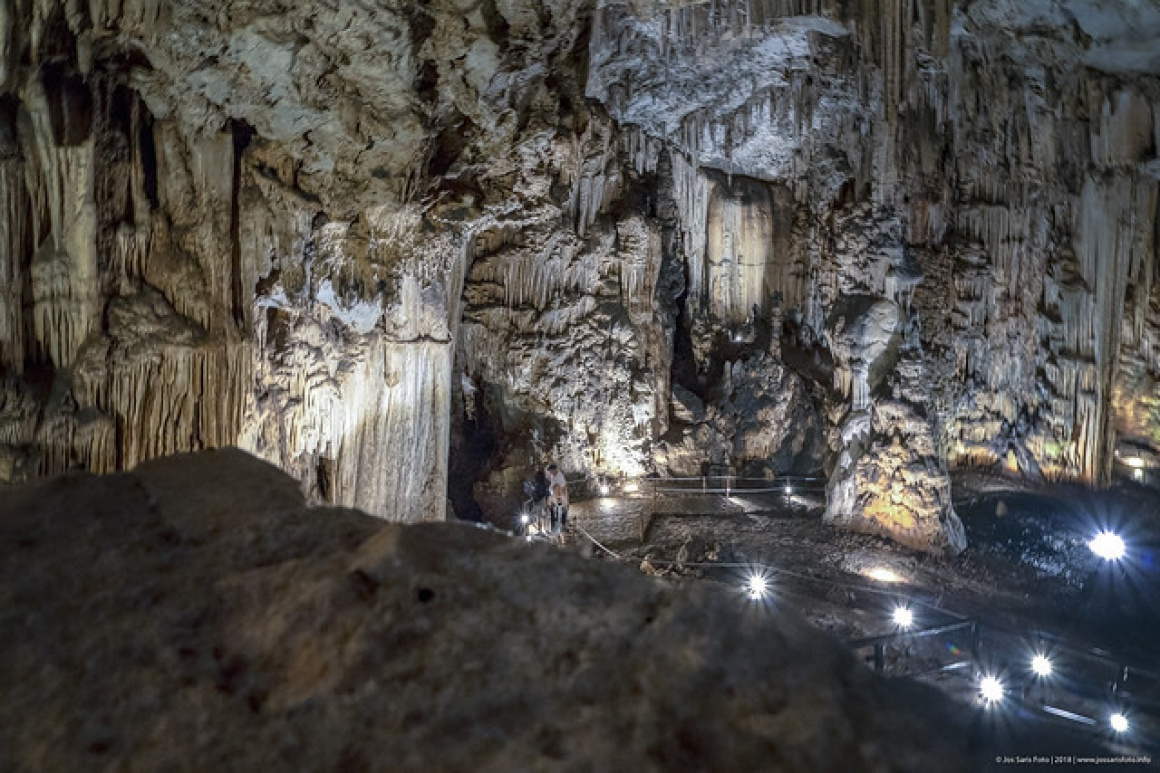Hidden in the foothills of the Psiloritis range in central Crete lies Melidoni Cave, a place where nature's artistry and Crete's tumultuous history intertwine beneath the earth. Stepping into Melidoni Cave (known to locals as Gerontospilios, meaning “Old Cave”) is like entering a vast stone cathedral. Stalactites hang from the ceiling like ancient chandeliers and stalagmites rise from the ground in mysterious forms, illuminated by soft lighting that casts flickering shadows on the damp walls. But Melidoni is more than just a geological wonder – it's also a sacred site of remembrance. This cave witnessed one of Crete's most tragic episodes during Ottoman rule, and today it stands as both a natural marvel and a solemn monument to resilience. A visit here is an immersive experience: cool subterranean air, eerie silence punctuated by dripping water, and a palpable sense that these caverns have stories to tell.
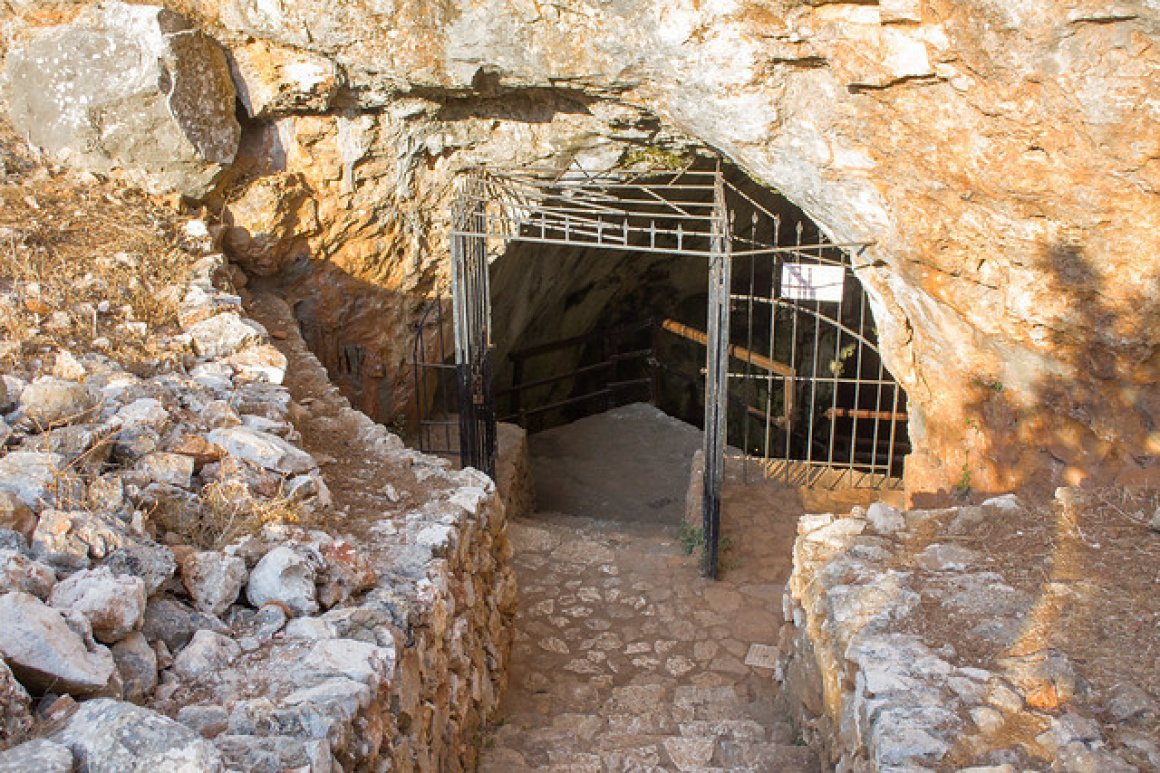
 'Melidoni Cave' - Attribution: Shadowgate
'Melidoni Cave' - Attribution: ShadowgateA Descent into Beauty and Myth
Melidoni Cave is reached by a short path from the village of Melidoni, winding through olive groves and scrub. As you approach the entrance, an impressive arched opening in the rock face beckons you in. The cave's mouth is grand, almost theatrical – it feels like you are Indiana Jones about to discover a hidden realm. A series of steps leads you down into the first chamber, aptly called the Room of Heroes. Here the air cools markedly and the light dims to an amber glow. Immediately you are greeted by a monumental flowstone formation; mineral-rich water over ages has created what looks like a frozen waterfall of stone. The scale is breathtaking – columns several meters high connect floor to ceiling, and massive stalagmites cluster like organ pipes.
Melidoni Cave has been used by humans for thousands of years. In fact, archaeologists found evidence of Minoan-era worship here – it was a sanctuary to Talos, the bronze giant of Crete's mythology. Legend says Talos, the island's ancient protector, was revered in this very cave. Standing in the hushed dark, it's easy to imagine torch-lit ceremonies 3,500 years ago, with priestesses offering libations to stalagmite altars. The cave's mystical atmosphere certainly lends itself to myth. Deeper inside, one chamber is named after Pashley, a 19th-century traveler who explored the site, and another called “Crossroad” leads to multiple smaller galleries. The cave isn't an endless labyrinth – much of it is accessible on a fixed path – but every turn reveals new wonders. Thin soda-straw stalactites dangle like delicate icicles. Translucent curtains of rock ripple down one wall, earning the name Chamber of Curtains for their uncanny resemblance to drapery.

 'Melidoni Cave' - Attribution: Shadowgate
'Melidoni Cave' - Attribution: ShadowgateAs you venture through, you might notice the silence; it's almost total, broken only by the occasional drip of water echoing in the darkness. The cave is home to bats, though they usually roost unseen in the higher crevices by day. The lighting is subtle, highlighting major formations but leaving corners in shadow to preserve the cave's natural feel. Unlike some show caves that blast garish colored lights, Melidoni's presentation is respectful and atmospheric. Midway through, you come upon a large open area with an imposing stone monument (ossuary) in the center. This is where Melidoni's historical significance becomes apparent – and the mood shifts from awe at nature to reverence for the past.
A Tragic History Carved in Stone
Melidoni Cave holds a special, somber place in Cretan memory. In October 1823, during Crete's struggle against Ottoman rule, around 370 women and children and 30 men from Melidoni village took refuge in this cave to escape approaching Turkish-Egyptian forces. The local Ottoman commander, Hussein Bey, discovered their hideout and demanded they surrender. The Cretans, fearing enslavement or worse, refused. What followed was a harrowing siege: the Ottomans sealed the cave entrance and on January 1824 they lit fires with burning straw and sulfur, suffocating everyone inside. When the cave was opened, all those sheltering had perished, sacrificing themselves rather than capitulate. It's an episode of heroic martyrdom etched into Crete's fight for freedom.
Today, in the first chamber of Melidoni, a large stone sarcophagus holds the bones of those who died in the cave. It's draped with a Greek flag, and a simple plaque lists the year of the tragedy. Standing before it, one can't help but feel a chill unrelated to the cave's temperature. This spot, under the earth, became a tomb for an entire community. The high vault of the cave ceiling and the massive stalagmites around almost resemble a natural chapel, and indeed it's treated like one – every year, locals hold a memorial service here to honor the Heroes of Melidoni. The smoky residue from that fateful fire of 1824 supposedly still darkens parts of the ceiling if you look closely.
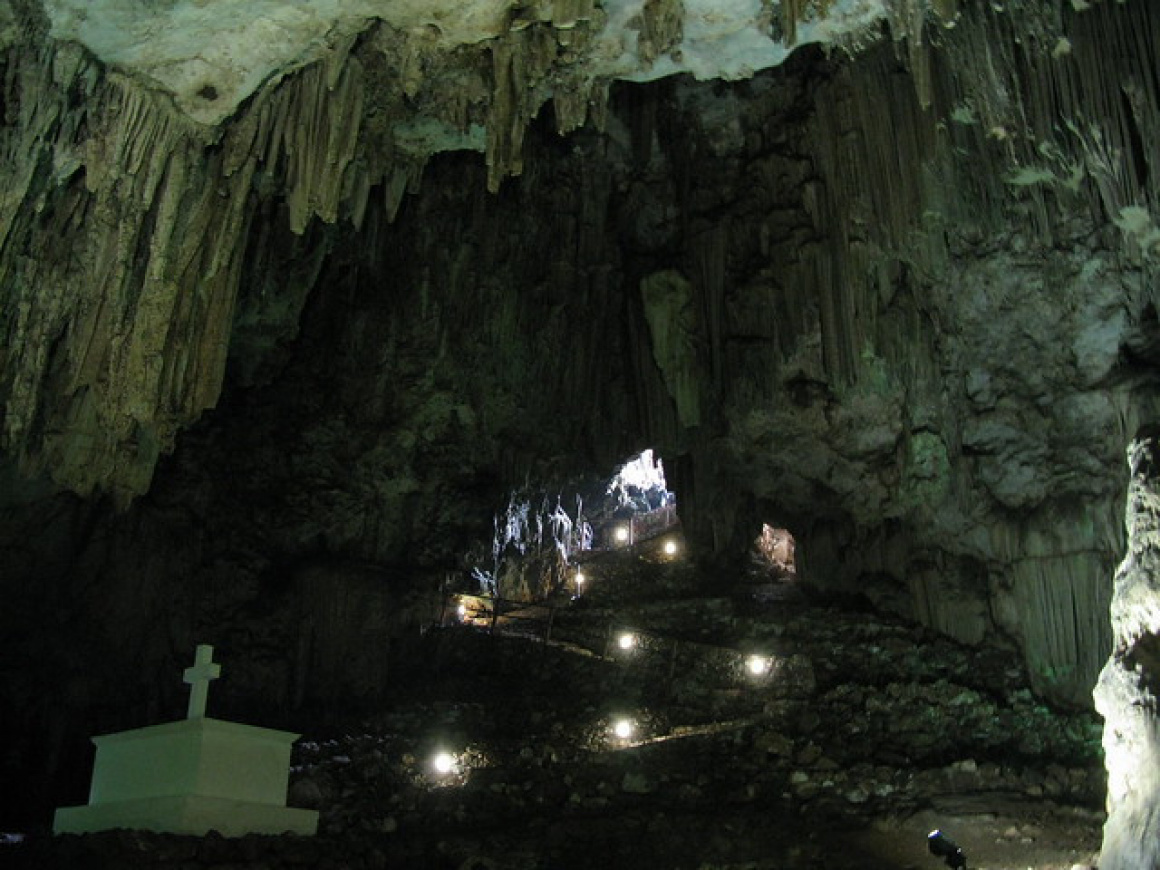
 'Melidoni Cave, Crete' - Attribution: Andrew and Annemarie
'Melidoni Cave, Crete' - Attribution: Andrew and AnnemarieMelidoni's tragic story was a rallying cry in subsequent revolts; the phrase Remember Melidoni spurred many Cretans to continue fighting Ottoman oppression. As a visitor, you become a witness to this history. Many leave a flower or stand in silence for a moment at the ossuary. It's a powerful experience to move from marveling at nature's formations one moment to reflecting on human courage and sacrifice the next – all in the same space. The cave thus serves a dual role: a geological museum and a historical memorial. Crete has other caves with tragic tales (like Milatos Cave in Lassithi), but Melidoni's is among the most poignant and well-presented.
Exploring the Cave: Practicalities and Highlights
Visiting Melidoni Cave is relatively easy and suitable for most ages, though there are some steps and uneven ground. The cave's interior path is about 200 meters long and not overly extensive, so a typical visit lasts 30–45 minutes. Sturdy shoes are recommended – the steps can be damp and a bit slippery. The cave is well-lit but bringing a light jacket or sweater is wise, as the temperature inside stays around 16°C (60°F) even in summer, which feels cool compared to the outside heat. There is an entrance fee (a few Euros), used for maintenance and lighting.
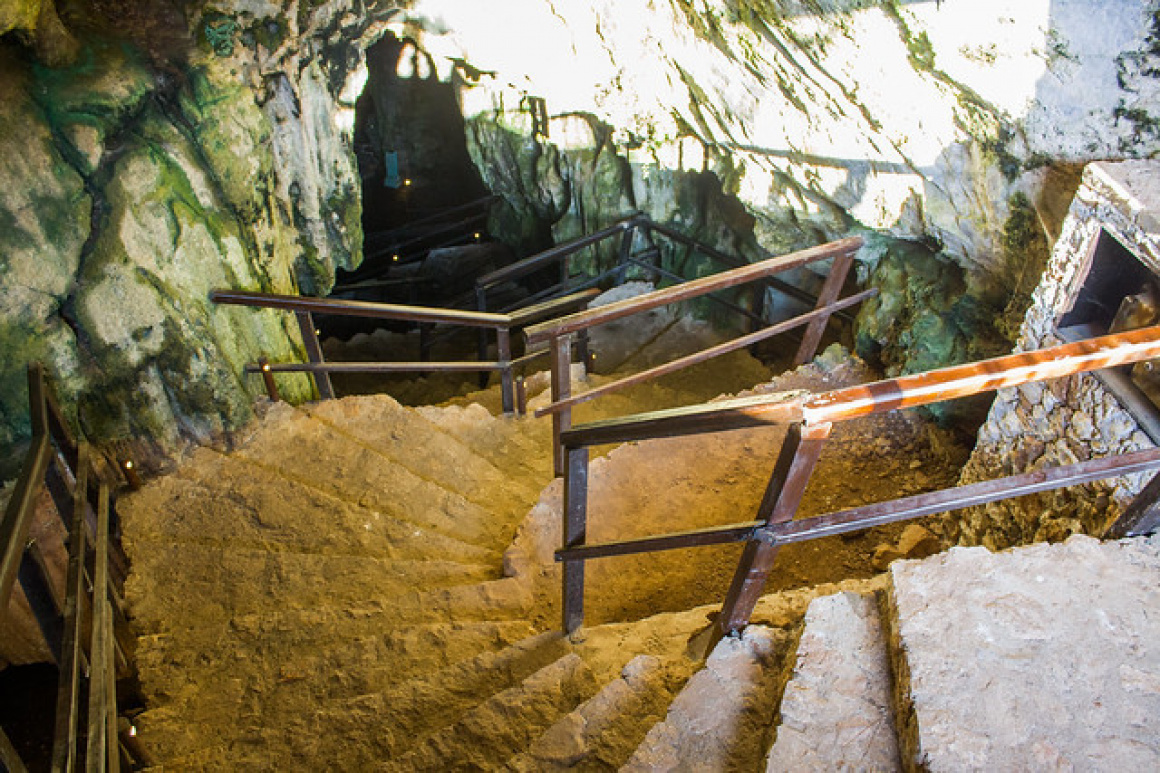
 'Melidoni Cave' - Attribution: Shadowgate
'Melidoni Cave' - Attribution: ShadowgateAs you go through the chambers, keep an eye out for specific formations that captivate the imagination:
If you're interested in archaeology, note that finds from Melidoni Cave (like bronze figurines and pottery from Minoan times) are displayed in the Rethymno Archaeological Museum in town. The cave itself sometimes has informational panels about the excavation findings and the Talos cult artifacts discovered. It's fascinating to consider that long before tragedy struck here, ancient worshipers visited Melidoni as a sacred grotto.
Photography is allowed (without flash is better, to avoid disturbing bats and other visitors). The low-light challenge can produce some dramatic photos of lit formations against darkness. If you're traveling with children, Melidoni Cave can be a thrilling adventure – the scale of the cave impresses them, and the story of brave villagers can be shared in a gentle way to instill respect. (However, very young kids might find the ossuary and story frightening, so gauge accordingly.)
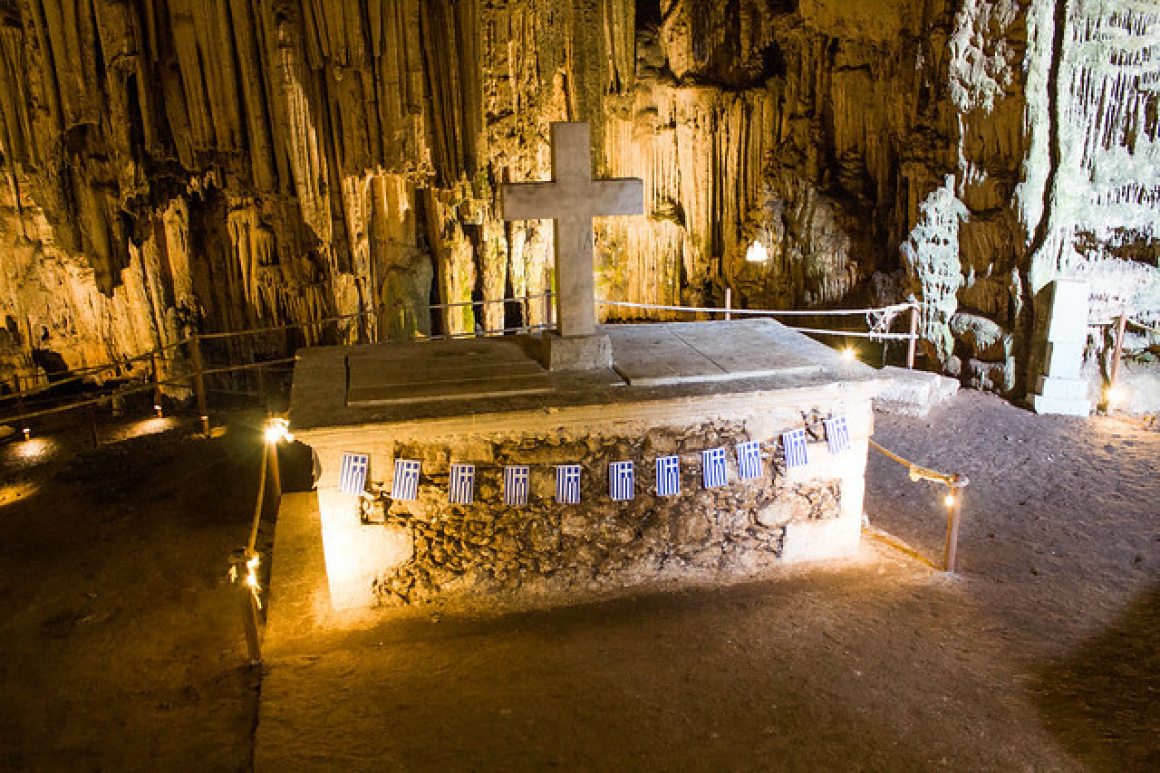
 'Melidoni Cave' - Attribution: Shadowgate
'Melidoni Cave' - Attribution: ShadowgateOutside the cave, make sure to take in the panorama. The cave entrance area overlooks the countryside of Geropotamos valley. You can see rolling hills dotted with olive trees and the distant shimmer of the sea northwards. There are a couple of shaded picnic tables near the parking – a nice spot to rest after the cave and perhaps snack on some local olives and bread you brought along. The site has a small kiosk for water and basic refreshments in season, and often a local vendor selling thyme honey or herbs from the village.
Nearby Sights and Tips
Melidoni Cave is in Rethymno prefecture, roughly 30 km east of Rethymno town (about a 40-minute drive) and 60 km west of Heraklion. It pairs well with other attractions in the area for a day trip. Margarites, a village renowned for traditional pottery, is only 8 km away – you can watch potters at work and shop for beautiful ceramics there, making for a nice cultural counterpoint after the cave. Also nearby is the historic Arkadi Monastery, another symbol of Cretan resistance with its own tale of siege and sacrifice in 1866. Combining Arkadi Monastery and Melidoni Cave in one day can be a profound journey into Crete's freedom struggle heritage.
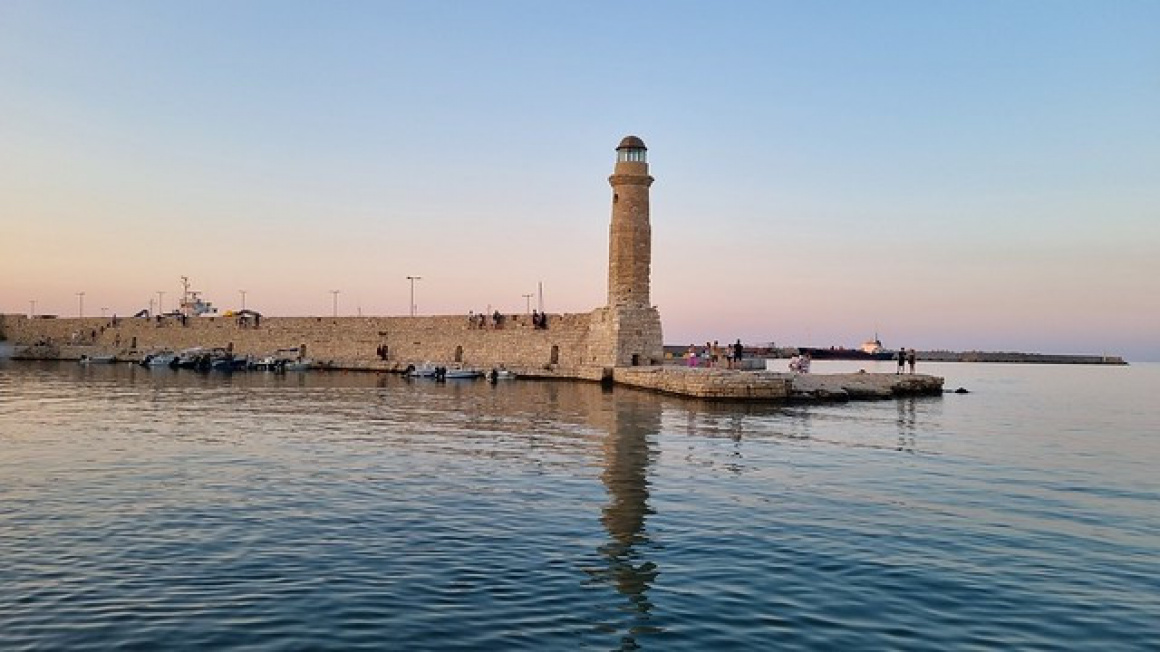
 'Rethymno - Lighthouse' - Attribution: o.gran
'Rethymno - Lighthouse' - Attribution: o.granIf you're coming from the Heraklion side, consider stopping at Bali, a seaside village just off the highway, for a swim or lunch; then drive up to Melidoni in the afternoon when the cave is cool and quiet. The cave is usually open daily during the tourist season (closed in winter or on very rainy days), typically from morning till late afternoon.
Melidoni Cave doesn't generally have guided tours included, but the caretakers at the entrance are knowledgeable – feel free to ask them questions before or after. Sometimes, if a large group arrives, a staff member might give a short intro talk about the history at the ossuary. There are also signs in multiple languages detailing the history, myth, and geology, so you can do a self-guided visit and still learn a lot.
One practical tip: the cave floor can be wet, and those drips from stalactites can surprise you – they are known jokingly as the tears of Talos. They say if a drop of cave water hits you, it's good luck. So, if you feel a cold drip on your shoulder while contemplating a stalagmite, just smile and make a wish!
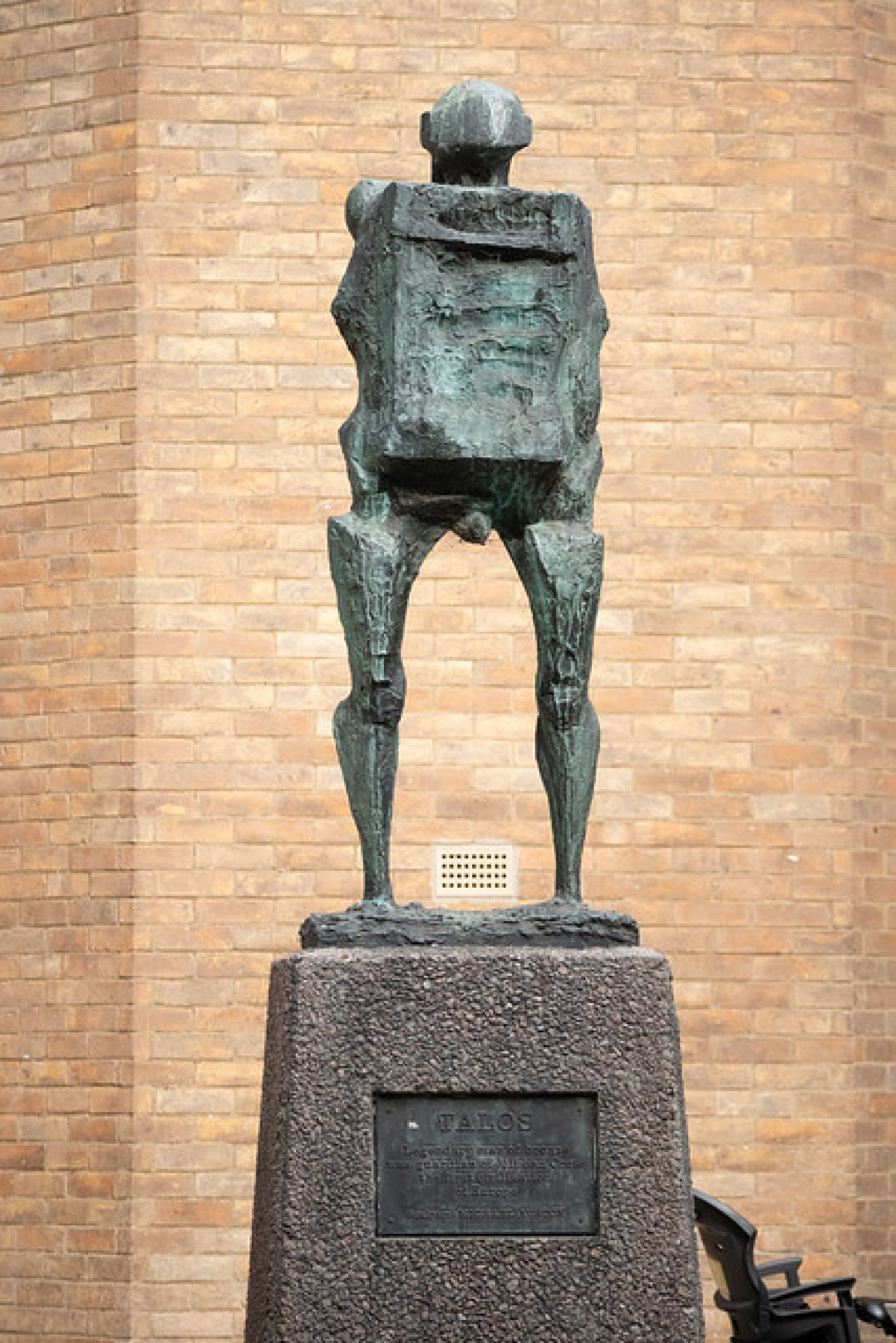
 'Talos - Cambridge' - Attribution: Mr ATM
'Talos - Cambridge' - Attribution: Mr ATMVisiting Melidoni Cave is a moving experience. You emerge from the underworld back into sunlight with a deeper appreciation for Crete's natural wonders and a heart touched by the island's indomitable spirit. It's a must-see for those exploring the Rethymno region – a place where geology, mythology, and history converge in a way that only Crete can offer.


